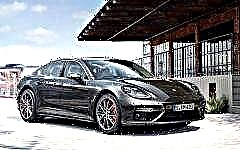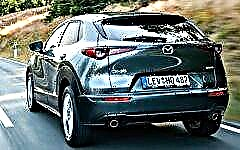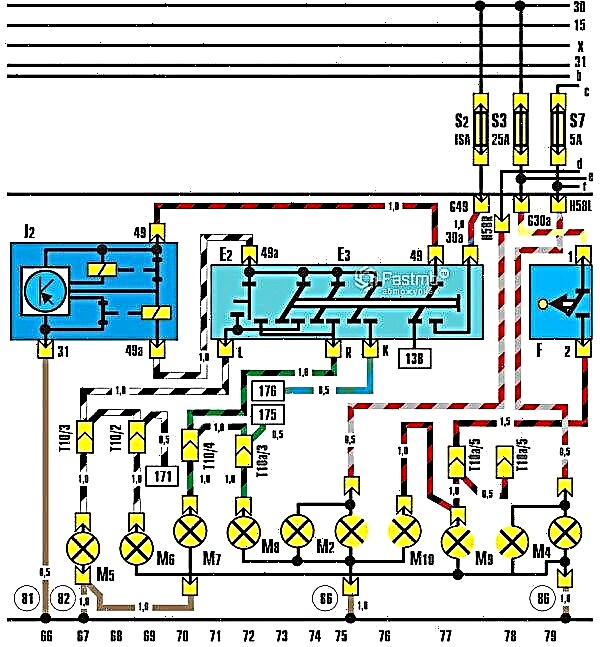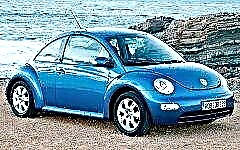

The content of the article:
- Pioneers
- Isuzu revives the economy
- On the path of militarism
- Saving the country
- Science or management
- Sports part
- Mutual assistance
The very first car manufacturer in Japan. The company that studied, improved and promoted diesel engines to the general public. Repeated winner of the Paris-Dakar rally!
All this is about one of the world's largest manufacturers of diesel power units, trucks, pickups, minibuses and SUVs - Isuzu.
1. Pioneers

Pictured: First Wolseley model assembled by Isuzu
Although the name by which the automaker is now known all over the world - Isuzu Motors Limited - appeared only in 1949, the history of the company begins in the distant 1916.
Two large industrial factories in Tokyo have teamed up to develop their own freight transport. But the transport is not simple, but diesel.
It should be noted that by that time the diesel engine had existed for only a couple of decades and no one, either in Japan or in the rest of the world, could find its effective application in practice. And now, by the 22nd year, under the license of the British company Wolseley Motors, the Japanese presented the first truck with a diesel engine, named A-9.
In 1933, another Japanese automobile company joined the company, after which a special research committee was established in the field of diesel engines.
The result of the committee's work was the air-cooled power unit, the DA6, introduced in 1936, which was the greatest breakthrough in Japanese diesel research.
By 1941, the company was the only one in Japan that had government approval for diesel engines. And by 1950, engineers had developed a water-cooled V8 diesel engine and an improved direct injection combustion chamber.
Finally, it was Isuzu who first created a functioning passenger car with a diesel powertrain, for which he was recognized by the Japanese Society of Mechanical Engineers.
2. Isuzu revives the economy

In the photo: Truck Type A
In the 1920s, Japan had a difficult time: the First World War did not bring such a "golden rain" as it poured on American factories, then the earthquake with the tsunami caused devastating damage to the country, destroying, among other things, the railway communication between the cities. Without their own production, the Japanese authorities pinned their hopes on the localization of the assembly of foreign cars.
It was during this period that Isuzu managed to secure an order for the production of a batch of Type A trucks as part of the economic recovery program. And although the annual production volume was only one hundred copies, it was Isuzu that became the only manufacturer of mass transport in Japan, which became domestic trucks.
3. On the path of militarism

In the photo: Sumida Type 91 M.2591 So-Mo
In 1929, the automaker presented a bus for domestic lines. However, Japan was increasingly ruled by the military, who were interested exclusively in the needs of the army.
Therefore, under the Sumida brand, Isuzu hastily, in just a year, constructs an armored car-railcar Typ 91 M 2591 So-Mo, capable of moving both on the ground and on railroad tracks.
Cars selected for the army were decorated with a chrysanthemum emblem above the radiator grill and were allowed to go into mass production. They were used as artillery tractors, sent to airfields to service aircraft, transferred fuel and weapons supplies, as well as troops.
All new engines developed by Isuzu were also used to equip trucks and other equipment at the disposal of the imperial army.
4. Saving the country

In the photo: Isuzu fire tanker
Considering the abundance of wooden architecture in Japan, it was quite reasonable for the Isuzu management to pay special attention to special equipment, including fire engines. Due to the unstable seismic situation, destruction caused by fires, Japan suffered huge losses.
The automaker designed a special chassis for equipping fire engines, which turned out to be so effective that it is still actively used in Southeast Asia, Australia, New Zealand, New Guinea, and Tasmania.
Now Isuzu has its own line of special equipment, including fire tankers. These vehicles received enviable maneuverability, which is so important in an urban environment, safety and comfort for a combat crew.
Tank trucks provide a convenient location for firefighters, who have a wide panorama of the road and destination, and a competent dashboard with a maximum of useful information.
Such a car is equipped with a GLONASS satellite system and a remote engine speed control function. For a compact container containing water and a foaming agent, polymer composite materials are used.
5. Science or management

The Isuzu team, perhaps, was overly carried away by scientific research in the field of diesel engines and forgot about such an important component as management. As a result, the management missed the moment when all opponents began to produce SUVs, which were in great demand. It was necessary to urgently reorient towards consumer tastes, for which in 1971 a partnership agreement was concluded with the American giant General Motors.
Almost instantly, by the standards of the industry, too "narrow" Isuzu models were updated, and the first light saw the light of the Gemini passenger car, which has two engines at once - gasoline and diesel. He opened the way for the Japanese to the North American market and gave a completely new round of development.
6. Sports part

In the photo: Isuzu during the "Silk Road 2017"
Like any automaker, albeit focused on heavy and cumbersome vehicles, Isuzu “dreamed” of speed.
The first impressive achievement for the company came from the Isuzu Mu pickup truck, which in 1993 won the diesel competition in the Paris-Dakar race. A more daring attempt - participation in the prestigious T2 class of the most eminent race on the planet - was undertaken only two decades later.
The engineers decided not to philosophize and traditionally equipped their Isuzu D-Max racing model with a diesel engine, with which they sent it to the Australian competitions for running-in, testing the cars for resistance in overcoming the most difficult terrain and fighting with serious participants.
With the help of a 6-cylinder, 242-horsepower 3-liter engine, the Isuzu team won a landslide victory in their class. The pickup accelerated to hundreds of kilometers in 7 seconds and developed a top speed of 190 km / h.
However, there are no sections on the Dakar track where you can maintain such a speed, especially if they pass through sandy territory. In this race, luck turned away from the Japanese pilots, but in 2016 the Japanese team took second place in the unique Silk Way Rally.
The competition took place in three world capitals - Moscow, Astana and Beijing - and covered 10 thousand kilometers across vast steppes, mountain serpentines and sands, among which were partially located special high-speed special stages.
7. Mutual assistance

In the photo: Alliance GAZ and Isuzu
Historically, Isubu was not a unified company in the hands of a single founding father. New enterprises constantly poured into it, and irrelevant ones broke off relations.
Also, the brand constantly entered into mutually beneficial partnerships with other manufacturers: GM, Mazda, Volkswagen and many, many others.Almost all Chinese SUVs ride on Isuzu frames, many American and Japanese cars drive Isuzu diesel units - finally, the turn has come to Russia.
The domestic heavy transport plant GAZ entered into an agreement on the joint development of a number of models, including diesel versions of Gazelle and Sobol, right-hand drive copies of Gazelle for export, as well as on the construction of heavy trucks Ural using the Japanese component base ... The likelihood of an agreement on the contract assembly of Isuzu trucks at Russian facilities is also possible.
Conclusion
For more than a century of the existence of this oldest automobile brand, Isuzu has experimented several times: with hybrid cars in partnership with GM, with a sports direction, with passenger cars. And all these attempts only further proved that the company initially chose the correct, its own path, which consisted of working on the world's best diesel engines and the production of trucks.
Isuzu Motors is now one of the world's largest manufacturers of SUVs, trucks and buses, whose hallmark is tireless work to improve the manufacturability of its famous diesel engines.
ISUZU











